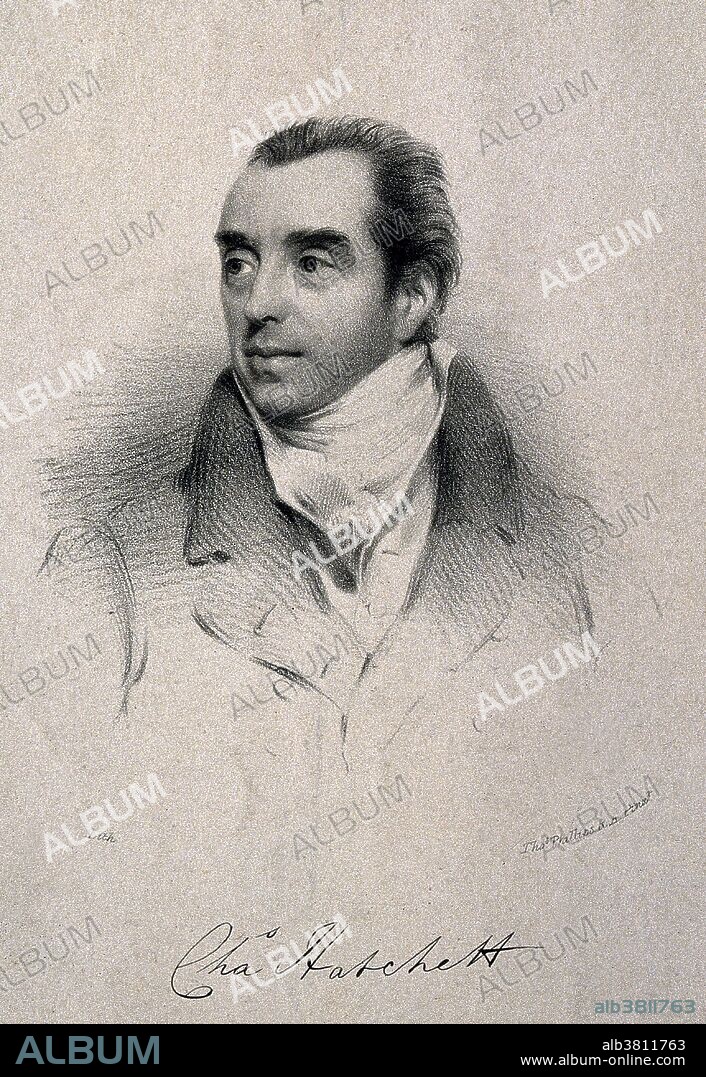alb3811763
Charles Hatchett, English Chemist

|
Add to another lightbox |
|
Add to another lightbox |



Title:
Charles Hatchett, English Chemist
Caption:
Charles Hatchett (January 2, 1765 - March 10, 1847) was an English chemist. In 1801 while working for the British Museum in London, Hatchett analyzed a piece of columbite in the museum's collection. Columbite turned out to be a very complex mineral, and Hachett discovered that it contained a "new earth" which implied the existence of a new element. Hatchett called this new element columbium (Cb) in honour of Christopher Columbus, the discoverer of America. In November of that year he announced his discovery before the Royal Society. The element was later rediscovered and renamed niobium (its current name). Since 1979, the Institute of Materials, Minerals and Mining (IOM3) has given the Charles Hatchett Award yearly to a noted metallurgist. The award is given to the "author of the best paper on the science and technology of niobium and its alloys."
Credit:
Album / Science Source / Wellcome Images
Releases:
Model: No - Property: No
Rights questions?
Rights questions?
Image size:
3101 x 4500 px | 39.9 MB
Print size:
26.3 x 38.1 cm | 10.3 x 15.0 in (300 dpi)
Keywords:
18TH CENTURY • 18TH CENTURY, THE • 18TH • 19TH CENTURY • ART • ARTWORK • BW • CELEBRITIES • CELEBRITY • CHARLES HATCHETT • CHEMICAL ELEMENT • CHEMIST • CHEMISTRY • COLUMBIUM • DISCOVERED COLUMBIUM • DISCOVERED NIOBIUM • DRAWING • ENGLISH • EUROPEA • EUROPEAN • FAMOUS • FIGURE • HATCHETT • HISTORIC • HISTORICAL • HISTORY • ILLUSTRATION • ILLUSTRATIONS • IMPORTANT • LITHOGRAPH • MALE • MAN • MEN • METAL • NIOBIUM • NOTABLE • PEOPLE • PERSON • PERSONALITIES • PERSONALITY • PORTRAIT • POTRAIT • SCIENCE • SIGNATURE • SIGNED • WELL-KNOWN
 Pinterest
Pinterest Twitter
Twitter Facebook
Facebook Copy link
Copy link Email
Email

